In general, Windows computers are known to come up with “No Internet Secured” error message while trying to establish the initial connection with an available Wi-Fi Network.
However, it is also not uncommon for the computer to come up with “No Internet Secured” error in the middle of a browsing session and while trying to connect to certain websites.
Fix for “No Internet Secured” Error in Windows 11/10
If your computer is unable to connect to internet due to “No Internet Secured” Error, you should be able to fix the problem using the following steps.
1. Restart the Computer
In many cases, the reason for network connectivity and other problems on a Windows computer is due to stuck app or process preventing the computer from connecting to the internet.
1. Use the Power button to switch OFF the computer.
2. After the computer is totally powered off > Wait for 30 seconds and Restart the computer.
2. Update Network Adapter Driver
Follow the steps below to update drivers for the Network Adapter on your computer.
1. Right click on Start button > click on Device Manager.
2. On Device Manger Screen, expand Network Adapters entry > right-click on the Wi-Fi Adapter and click on Update Driver Software option.
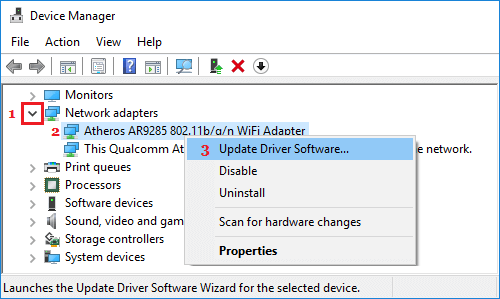
Tip: If you see multiple entries, look for something that has Network, 802.11b or WiFi in it.
3. On the next screen, select Search automatically for updated driver software option and follow the instructions to install updated driver software (if available).
3. Try Network Troubleshooter
You can trust the built-in Network Troubleshooter as available in Windows 11 to find and fix network connectivity problems on your device.
1. Go to Settings > System > scroll down in the right-pane and click on Troubleshoot.
2. On the next screen, scroll down and click on Other troubleshooters.
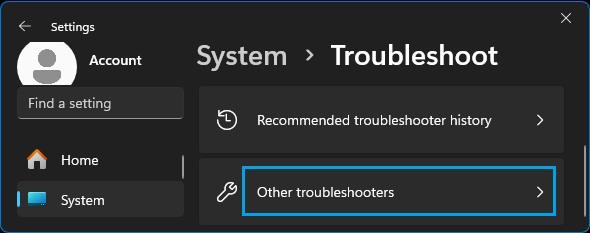
3. On the next screen, click on the Run button located in “Network & Internet” tab.

4. Follow onscreen instructions as the troubleshooter tries to find and fix internet connectivity problems on your computer.
4. Renew Computer’s IP Address
The problem could be due to your IP Address being blocked on the internet. Hence, follow the steps below request a New IP Address from the DHCP server (which is your Router).
1. Type CMD or Command Prompt in the Search bar > right-click on Command Prompt in the search results and select Run as Administrator option.
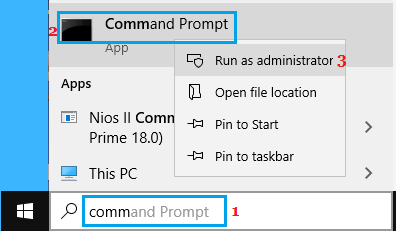
2. In Command prompt window type ipconfig /release and hit the Enter key. This will release the current IP Address of your computer
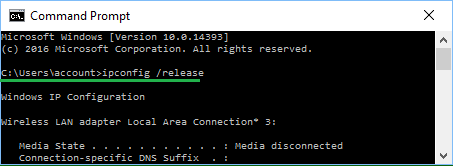
3. Next, type ipconfig /renew and hit the Enter key to Renew the IP Address of your computer.

4. Type exit to quit Command Prompt and see if you can connect to the internet.
5. Restart Modem/Router
Restarting the Modem/Router is known to help in fixing network connectivity issues,
1. Disconnect the Modem/Router from its power supply source.
2. After 60 seconds, connect Modem/Router back to its Power Supply source.
After the Modem restarts, you should be able to connect your computer to internet.
6. Reset Network Settings
The problem could be due to a change or corruption of network settings on your computer. Hence, note down the password for your Wi-Fi Network and follow the steps below to Reset the network settings on your computer.
1. Go to Settings > Network & Internet > Advanced Network Settings.
2. On Advanced Network Settings screen, click on Network Reset tab, located under “More Settings” section.
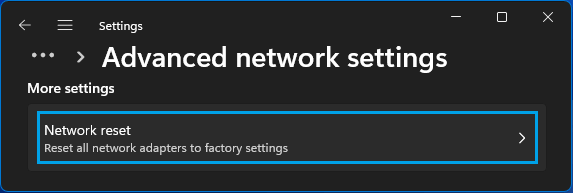
3. On the next screen, click on Reset Now button.
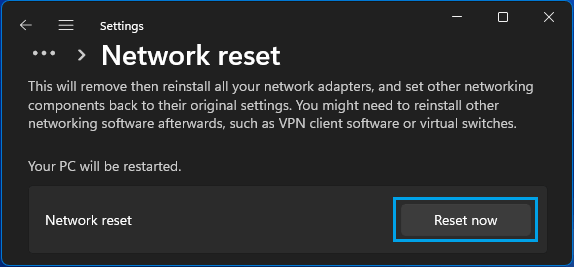
4. On the confirmation pop-up, select the Yes option to confirm.
After the computer restarts, join Wi-Fi network by entering your Wi-Fi network password and see if you can connect to the internet.